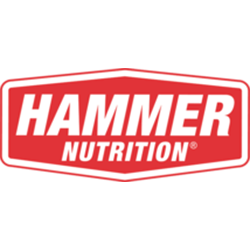Growth and energy requirements of adolescents
Katherine Parker, M.S., R.D
Our children are important to us. Among our many concerns, we ponder the nutritional needs necessary for optimal growth. Growth can be impaired by poor dietary intake. One of the main sources of limitations is insufficient energy. There is a sharp increase in energy needs with the growth spurts of adolescence. As we know, there is a large variance in growth spurts of adolescents. This variance has limited the quantity of research necessary to provide the energy and protein recommendations for youth. The metabolic demands of exercise complicate such recommendations.
It is difficult to assess if the growing youth are eating too many or too few calories. Although young men typically gain weight at an equivalent rate to their height, young women store energy on the body as fat prior to the height changes. This increase in fat is a necessary part of the young woman’s development and should not warrant a restriction in calories.
The most important factors to consider in the diet of an adolescent are the quality of the food sources, the diversity of the food, sufficient water consumption, and the communication with trained health care professionals who have experience with athletes. Experts in the field believe not only the macronutrients play a role in performance. However, vitamin and minerals such as vitamin D, B6, iron, calcium, magnesium, and zinc are crucial. These nutrients are obtainable in a balanced diet. And a balanced diet does not exclude any food groups.
It is recommended one refers to the tables below to calculate the energy and protein needs for the appropriate aged athletic youth.
| Age (years) | Kcal/Cm height Moderate exercise | Kcal/Cm height Extensive exercise | Grams protein/day |
|---|---|---|---|
| Girls | |||
| 11-14 | 21.00 | 22.40 | 46 |
| 15-18 | 18.90 | 20.25 | 44 |
| 19-24 | 18.76 | 20.10 | 46 |
| Boys | |||
| 11-14 | 24.00 | 25.60 | 45 |
| 15-18 | 23.80 | 25.50 | 59 |
| 19-24 | 23.00 | 24.60 | 58 |
Example
Bob is a 15 year-old cyclist, 5 feet , 8 inches tall, who typically rides in excess of 8 hours each week.
The energy would be calculated as follows: Use the metric conversion 1 inch/2.54 cm to calculate 173 cm is Bob’s height
23.8 kcal/cm *173 cm = 4117 kcal/d
Bob should therefore consume 4117 kcal and 59 grams of protein
Please see an example of Bob’s diet on a typical day as well as the day of a 9 am criterium race below.
Typical Day for Bob
7 am
1 cups Honey Bunches of Oats Cereal
1 cup 2% milk
1 container of low fat yogurt
1 cup orange juice
1 egg
2 pieces of toast
2 tsp butter
9 am
6 saltine crackers
2 tbsp peanut butter
10 am
banana
12pm
1 sandwich with 3 oz deli meat and 2 oz cheese
1 can of soda
1 cup baby carrots with 1 tbsp ranch dip
2pm
1 medium apple with 1 tbsp peanut butter
3 pm
Chicken, bean and cheese burrito with avocado
4pm
His training ride Clif Bar
Clif Shot
5pm
Clif Shot
6pm
3 oz teriyaki salmon steak
2/3 cup wild rice
1 cup 2% milk
1/2 cup cooked vegetables with 1 tsp olive oil
1 cup salad with 2 tsp oil dressing
8 pm
6 small chocolate chip cookies
1 glass nonfat milk
1 cup strawberries
Race Day for Bob
7 am
4 pancakes with 2 tsp margarine
2 tbsp syrup
3 oz Canadian bacon
8am
Clif Shot
Smoothie
- Lowfat yogurt
- 1 cup berries
- 1 cup apple juice
- 2 tbsp honey
9 am
Race
10 am
Clif Bar
Clif Shot
12pm
1 regular burger
1 can of soda
1 regular serving of fries
3 pm
1 sandwich with 2 oz deli turkey
1 cup 2% milk
1 yogurt
3/4 oz pretzels
5 pm
1 cup salad with 2 tbsp dressing
1 cup cooked broccoli
1 C 2% milk
1 roasted chicken breast
1 C garlic mashed potatoes
1 dinner roll
7 pm
1 cup watermelon
8 pm
1/2 cup granola
6 almonds
Your health professional may use growth curves, http://www.cdc.gov/nchs/about/major/nhanes/growthcharts/charts.htm, as well as a comprehensive medical history, to determine if your child is meeting their nutritional requirements.














